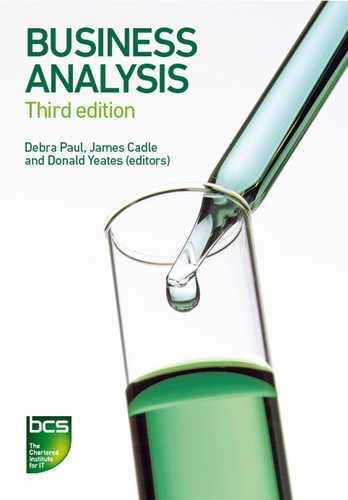CONTENTS
The origins of business analysis
The development of business analysis
The scope of business analysis work
The role and responsibilities of a business analyst
The business analysis maturity model
Professionalism and business analysis
The future of business analysis
2.THE COMPETENCIES OF A BUSINESS ANALYST
The right skills for the right situation
4.THE BUSINESS ANALYSIS PROCESS MODEL
An approach to problem solving
The business analysis process model
Documenting the current situation
6.STAKEHOLDER ANALYSIS AND MANAGEMENT
Stakeholder categories and identification
Stakeholder management strategies
Summary of stakeholder management strategies
Defining stakeholder involvement – RACI and RASCI charts
Using social media in stakeholder management
Understanding stakeholder perspectives
7.MODELLING BUSINESS PROCESSES
An alternative view of an organisation
The organisational view of business processes
Business Process Model and Notation
Defining business requirements
Introduction to business architecture
Definition of business architecture
Structure of a business architecture
Business architecture techniques
9.MAKING A BUSINESS AND FINANCIAL CASE
The business case in the project lifecycle
Presentation of a business case
10.ESTABLISHING THE REQUIREMENTS
The problems with requirements
A framework for requirements engineering
Requirements elicitation techniques
Building the requirements list
Agile approach to requirements
11.DOCUMENTING AND MANAGING REQUIREMENTS
The importance of documentation
The use of models in system maintenance
13.DELIVERING THE REQUIREMENTS
Development and delivery approach
14.DELIVERING THE BUSINESS SOLUTION
Stages of the business change lifecycle
